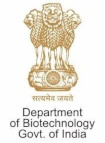ACRC - Publication Requirements
I) Please do read the one page <ARRIVE guidelines> before submitting your papers for publications. The arrive guidelines have now been endorsed by most of the major scientific journals, funding bodies and learned societies and describe all the different items to include in your scientific research paper when publishing work involving the use of laboratory animals-
II) IMPORTANT ARCHIVING & PUBLICATION REQUIREMENTS: correctly referencing your mutant / engineered alleles and rodent strains:
Please do acknowledge that for mutant and/or genetically engineered rodent alleles to be recognised and approved by the international mouse and rat consortiums and repositories, each engineered/mutant rodent allele and animal strain/line need to be properly named according to the latest international nomenclature standards as detailed <HERE> .
Importantly, more and more scientific journals such as Nature Genetics, The Journal of Immunolgy, Genome Research, ect... are also requesting and enforcing these International nomenclature standards before your work can be published in their journals.
Please do contact us if you need guidance on how to name your rodent strains. Guidelines are also available on the MGI website: http://www.informatics.jax.org/mgihome/nomen/
If your lab and/or animal breeding facility is not yet registered on the International Laboratory Code Registry at ILAR;
It is highly recommended that you do register your lab / facility / institute via their website: http://dels.nas.edu/global/ilar/Lab-Codes. Your registered <allele creator lab code> will be mandotory when referencing your novel engineered alleles for example.
The NCBS ACRC animal holding/breeding Site lab code is: < Ncbs >
=> For example the < C57BL6/J > originally imported to NCBS from Jackson Laboratories (J= JAX) are now to be referenced as <C57BL6/JNcbs> as stocks now being bred at the NCBS ACRC and not at JAX. This is of crucial importance to account for the naturally occuring genetic drifts and variousl selection pressures occuring in different breeding colonies. The animals being bred in different environments / locations will drift differently and these potential differences in genetic background need to be reflected in their strain nomenclature as they might impact scienticfic result outcomes.
III) Please do acknowledge the ACRC and our DBT NaMoR Funding source in your publications, posters and meeting presentations:
Our Recommended publication statement is: < Animal work in the NCBS/inStem Animal Care and Resource Center was partially supported by the National Mouse Research Resource (NaMoR) grant# BT/PR5981/MED/31/181/2012;2013-2016 & 102/IFD/SAN/5003/2017-2018 from the Indian Department of Biotechnology>.
IV) ETHICAL Clearance to be mentioned in your Materials and Methods of all your publications involving the use of Laboratory animals or animal tissues: Recommended statement would be: <All animal procedures were operated and approved according to the Instem or NCBS IAEC under IAEC project# XXXX.>
We can provide you with our NCBS AF logo to include in your conference/ seminar presentations (logos designed Sonal Kedia). Logos are available from our ACRC INTRANET webpage: Navigation->Facilities-> ACRC -


